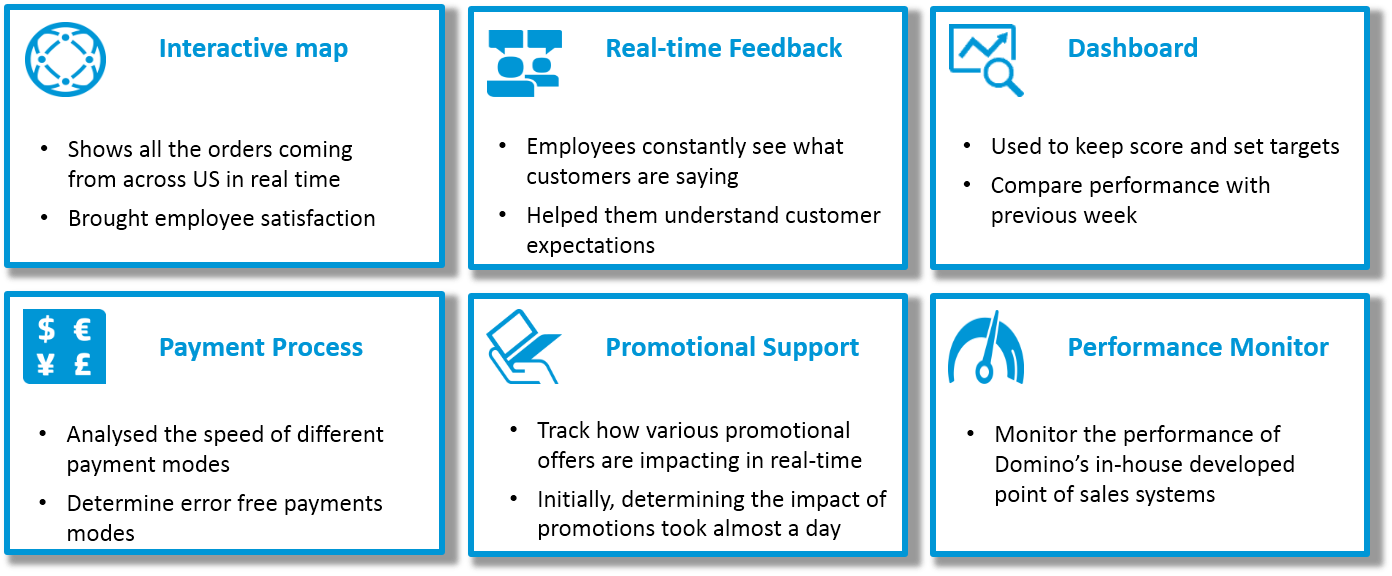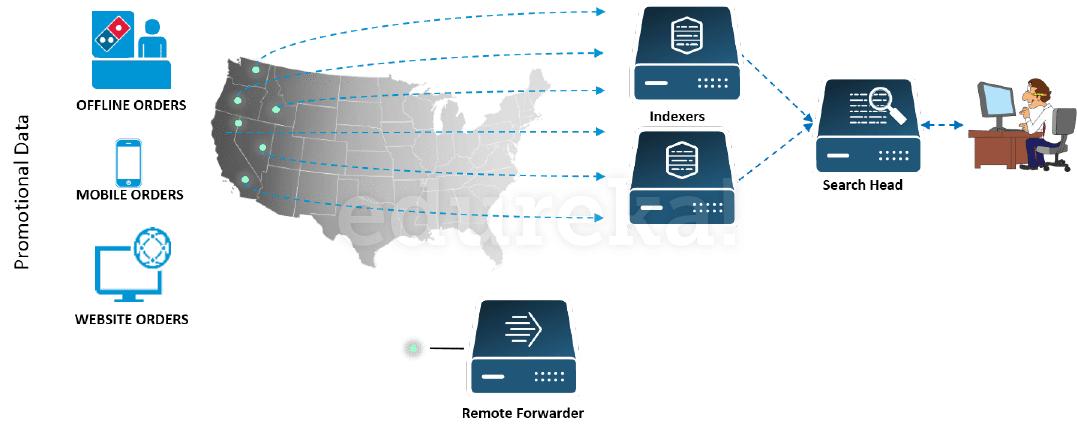Microsoft Azure Data Engineering Training Cou ...
- 15k Enrolled Learners
- Weekend
- Live Class
While many companies and organizations have used Splunk for operational efficiency, in this blog post I will talk about how Domino’s Pizza used Splunk to analyze consumer behavior to build data-driven business strategies. This Splunk use case shows how Splunk can be used extensively in any domain. The demand for Splunk Training as a skill in the industry is soaring high with companies of all sizes actively using Splunk and seeking certified professionals for the same.
You might be aware that Domino’s Pizza is an e-commerce cum fast food giant, but you might be unaware of the big data challenge they were facing. They wanted to understand their customers’ needs and cater to them more effectively by using Big Data. This is where Splunk came to the rescue.
Look at the image below which depicts the circumstances that were building up to cause big data problems at Domino’s.
Lot of unstructured data was generated because:
The excess data generated gave rise to the following problems:
Domino’s felt that the solution to these problems would lie in a tool which can easily process data. That was when they implemented Splunk.
Turner mentioned that using Splunk for Operational Intelligence in place of a traditional APM tool helped him to lower the cost, search the data faster, monitor performance and get better insights into how customers were interacting with Domino’s. If you look at the below image, you will find the different applications that were set up by implementing Splunk.

Splunk proved to be so beneficial to Domino’s that teams outside the IT department started exploring the possibility to use Splunk for gaining insights from their data.
I am going to present a hypothetical Splunk use case scenario which will help you understand how Splunk works. This scenario demonstrates how Domino’s Pizza used Promotional data to get better clarity as to which offer/coupon works best with respect to different regions, order revenue sizes and other variables.
*Note: The example of Promotional data used is representative in nature and data present might not be accurate.
Domino’s had no clear visibility into which offer works best – in terms of:
As you can see from the below image, promotional data was collected from mobile devices, websites and various outlets of Domino’s Pizza(using Splunk Forwarders) and sent to a central location(Splunk Indexers).

Splunk forwarders, would send the promotional data generated in real time. This data contained information about how customers responded when they were given offers, along with other variables like demographics, timestamp, order revenue size and device used.
Customers were divided into two sets for A/B Testing. Each set was given a different offer: 10% discount offer and flat $2 offer. Their response was analyzed to determine which offer was preferred by the customers.
The data also contained the time when customers responded and if they would prefer to buy in-store or do they prefer to order online. If they did it online, then the device they used to make the purchase was also included. Most importantly, it contained Order revenue data – to understand if offer response changes with the order revenue size.
Once the raw data was forwarded, Splunk Indexer was configured to extract the relevant information and store it locally. Relevant information being the customers who responded to offers, time at which they responded and the device used for redeeming the coupons/offers.
Typically, the below information was stored:
For performing various operations on the Indexed data, Search head was used. It is the component which gives a graphical interface for searching, analyzing and visualizing the data stored in the Indexers. Domino’s Pizza gained the below insights by using the visualization dashboards provided by the Search head:

Domino’s Pizza collated these results to customize the offers/coupons with respect to order revenue sizes for customers from a particular geography. They also determined which was the best time to give offers/coupons and targeted the customers based on the device they were using.
There are several other Splunk use case stories which show how various companies have benefited and grown their business, increased their productivity and security.
This Splunk use case blog would have given you a fair idea of how Splunk works. Read my next blog on Splunk architecture to learn what are the different Splunk components and how they interact with one another.
 Thank you for registering Join Edureka Meetup community for 100+ Free Webinars each month JOIN MEETUP GROUP
Thank you for registering Join Edureka Meetup community for 100+ Free Webinars each month JOIN MEETUP GROUPedureka.co